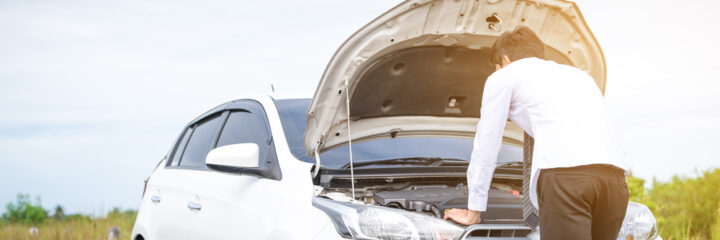There are numerous reasons why a car starts but stalls when put into gear. Some of the most common ones are as follows:
- The fuel pressure needs to be adjusted or replaced.
- A vacuum leak has developed in the intake manifold gasket, or a faulty valve cover gasket is allowing air into the engine oil system.
- The car’s computer may have sensed an issue and disabled start mode; this problem typically requires professional assistance to resolve.
- The ignition coils could be causing the vehicle to stall when put into gear.
- Poor connections in the starter or battery cables can cause a stalled engine.
- A misaligned timing belt would also likely result in stalling issues.
Some engines cannot start if there is not enough power. This can be an issue when the battery dies. This immobilizer feature prevents it from starting, and many times will also show a notification on your dashboard to let you know that it’s for safety reasons. Give the car some juice with jumper cables or call roadside assistance before trying anything else since they are usually equipped with jumpers for emergencies like this one.
The primary cause for faulty seals between tanks is mainly because people pump too much gas into them when refueling. Stop pumping gas into the tank if you hear a clicking sound coming out of nozzles at fueling stations. If you fill your car’s tank too much, the gas will spill over into more delicate parts of the engine.
This is not an issue with vented tanks because they have a vent for this situation as opposed to non-vented tanks where fuel has nowhere else to go but up and out onto other areas that are harder to clean without damaging sensitive components like sensors. To prevent spills from happening in automatic transmissions, opt instead for manual mode.
Another common reason why cars can stall in high gears is when drivers don’t have their gears set to fit the speed they’re traveling at. If you drive in too high gear for how fast or slow your engine is going, it’ll die on you.
If your car stalls on an uphill road, don’t panic and step hard on the footbrake, but keep it pressed like you normally would. Apply the parking brake (handbrake) to make the down start easier, or, if your car has a manual transmission, use the first gear instead of using neutral so that power is still applied to the engine. Start by releasing the clutch slowly while pressing down on the gas pedal until the vehicle speeds up enough for momentum to take over. Let gravity do the rest of the work here, as going downhill requires less effort.
What should one do when their car stalls in gear? As scary and frustrating as the experience is, follow these simple steps until the issue is fixed:
- Do not panic! It could be anything from a bad battery to low fuel pressure, and there’s no point in getting upset before you diagnose the problem.
- Turn on your hazard lights so other drivers can see where you are, then steer towards safety if necessary by turning around or parking off of traffic lanes.
- Remove the key from the ignition. Step out of your car and make sure to close all doors, including any remote locks you may have set up on your vehicle, before shutting it down.
- Wait for help to arrive.


